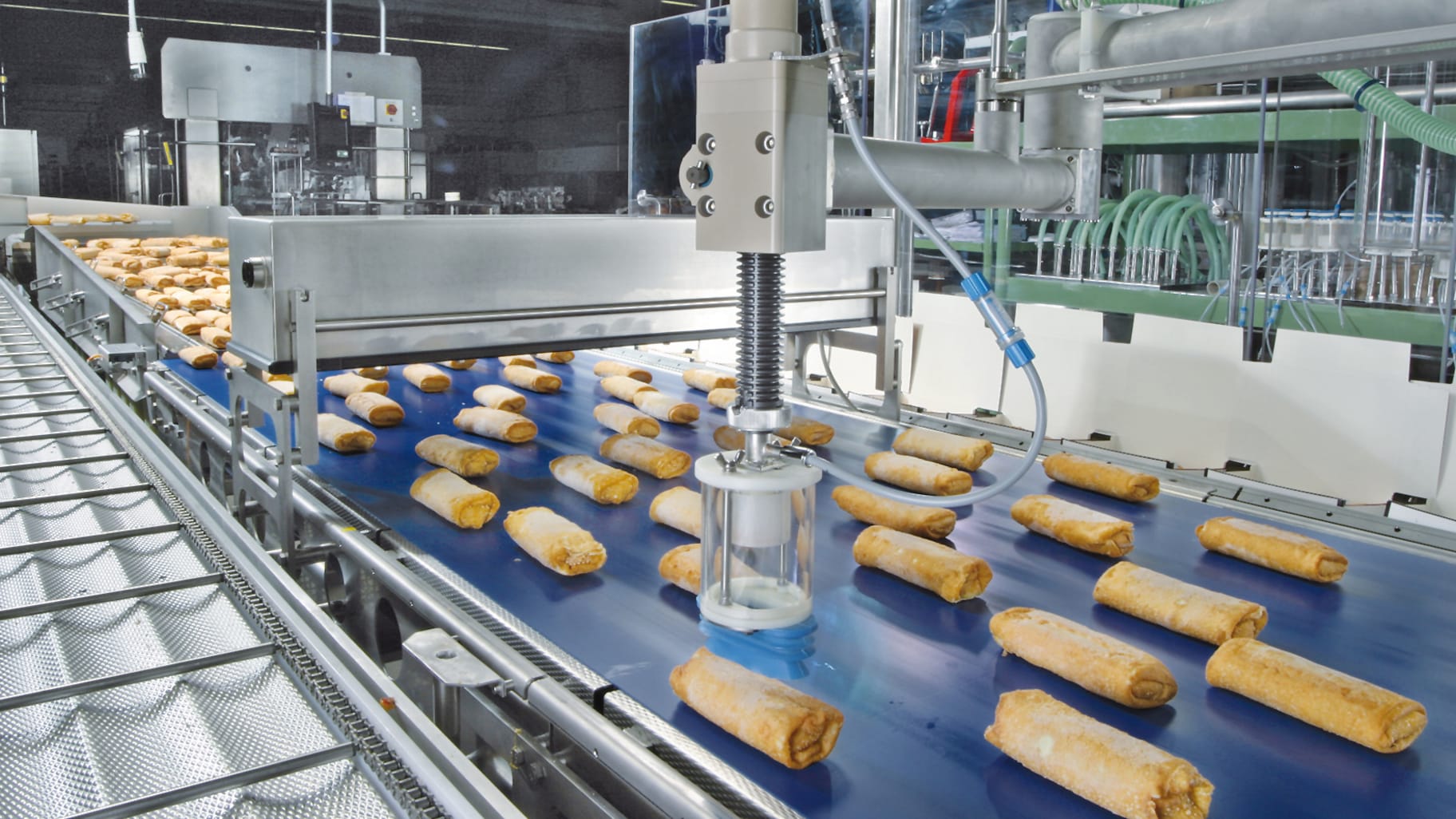Overview of the entire system
- A turnkey solution from Schubert Packaging Systems, including planning, project planning and implementation
- A complete system from component feeding to palletising
- Diverse formats and easy format changeover
Turnkey

Requirements
Packaging spring rolls into flowpacks, boxes and cartons: Daloon is one of the world’s largest producers of spring rolls. In order to position itself in the market with a new range of products, performance in the packaging area had to be increased.
Whether mini spring rolls or large and heavy chopsticks – the packaging process had to cover all formats. The frozen products need to be packed into flowpacks in the packaging area and then into boxes and cartons, where automated processes would significantly increase productivity. However, the respective sales markets and their distribution channels require a wide range of packaging and packing types. The key requirement was therefore a packaging system that could yield a consistently high output despite the numerous fo
Solution
To achieve a long-term, cost-effective solution, Schubert Packaging Systems analysed the entire final packaging process. All steps, ranging from the delivery of the frozen products to the wide variety of packaging types, to the ready-to-ship pallet, were considered. Based on the results, Daloon changed its initial plans for partial automation. It became clear that only full automation of all packaging steps would make sense in order to increase productivity to the required extent. Schubert Packaging Systems planned and implemented a complete solution – a fully automated packaging line with high performance and more than 50 packaging programmes.

The fully automated system is not only taking us a big step forward for now. Because it can be easily adapted to new products and packing patterns, it also secures our position in the future – the processes remain efficient, no matter which new snacks we may launch into the market.
Hemming Van
Managing Director and Project Manager at Daloon
High efficiency of all system components
Two oscillating conveyors are used to separate and feed the frozen products into the packaging line. The products reach the picker lines via two product belts. There, they are picked up by four F4 robots per line and, depending on the programme selected, either inserted into cartons or into the flow-wrappping machine’s transport chain. Defective goods are detected by the Schubert scanner ensuring only flawless products are packed. A TLM erecting machine feeds the carton blanks, erects and then glues them perfectly. The picker output is up to 625 units per minute.
The secondary packaging is handled by two Schubert case packers. Depending on the programme selected, up to 120 flowpacks or up to 120 cartons are transported into the system on two belts. The cartons are then placed onto the next belt as a formation by F4 robots. F2 robots pick up the formation and place them into the previously automatically erected cases.
The filled cases are sealed with adhesive tapes at the top and bottom in two systems and forwarded to a central palletising robot. The latter places the shipping cartons on Euro pallets or UK pallets.